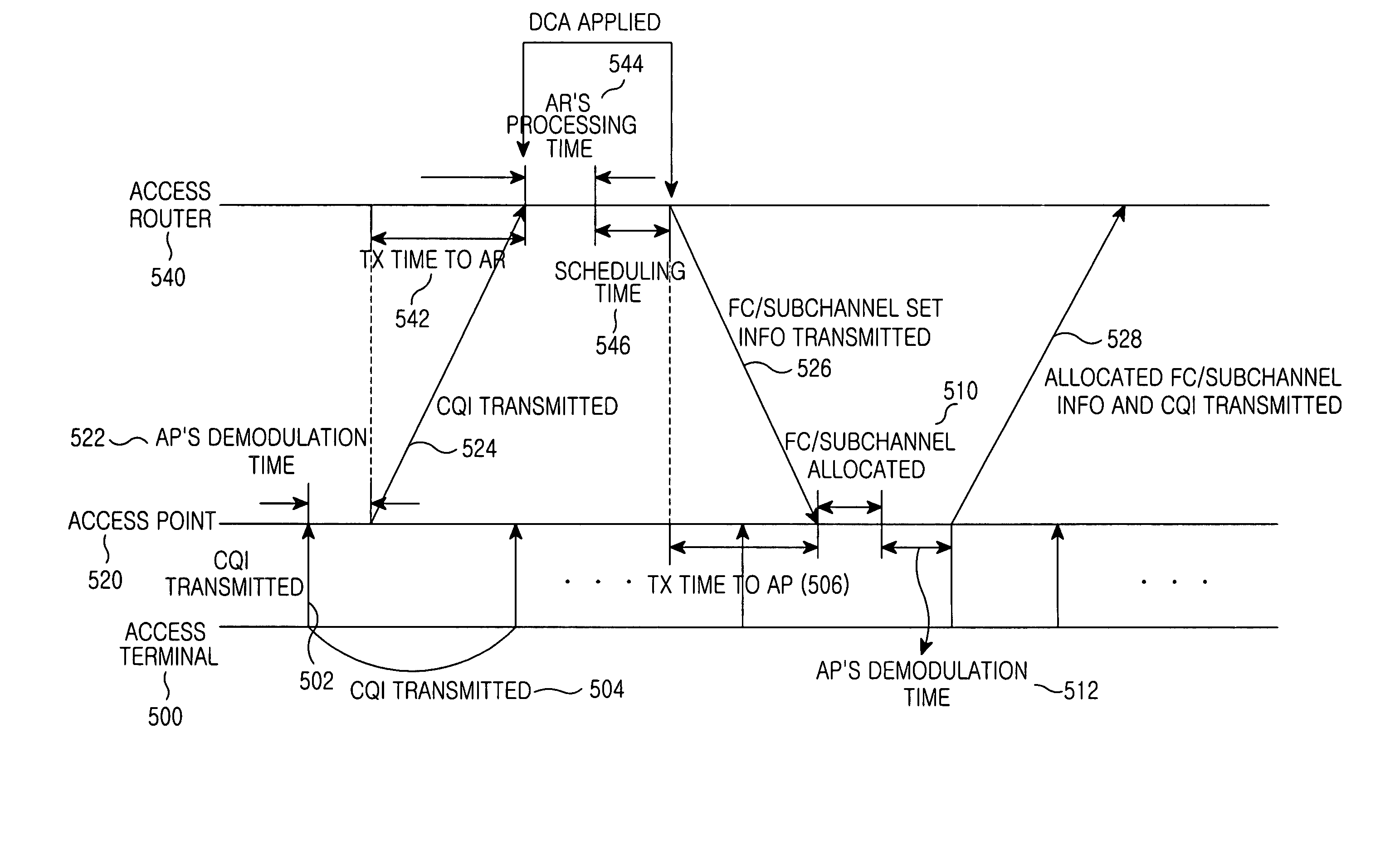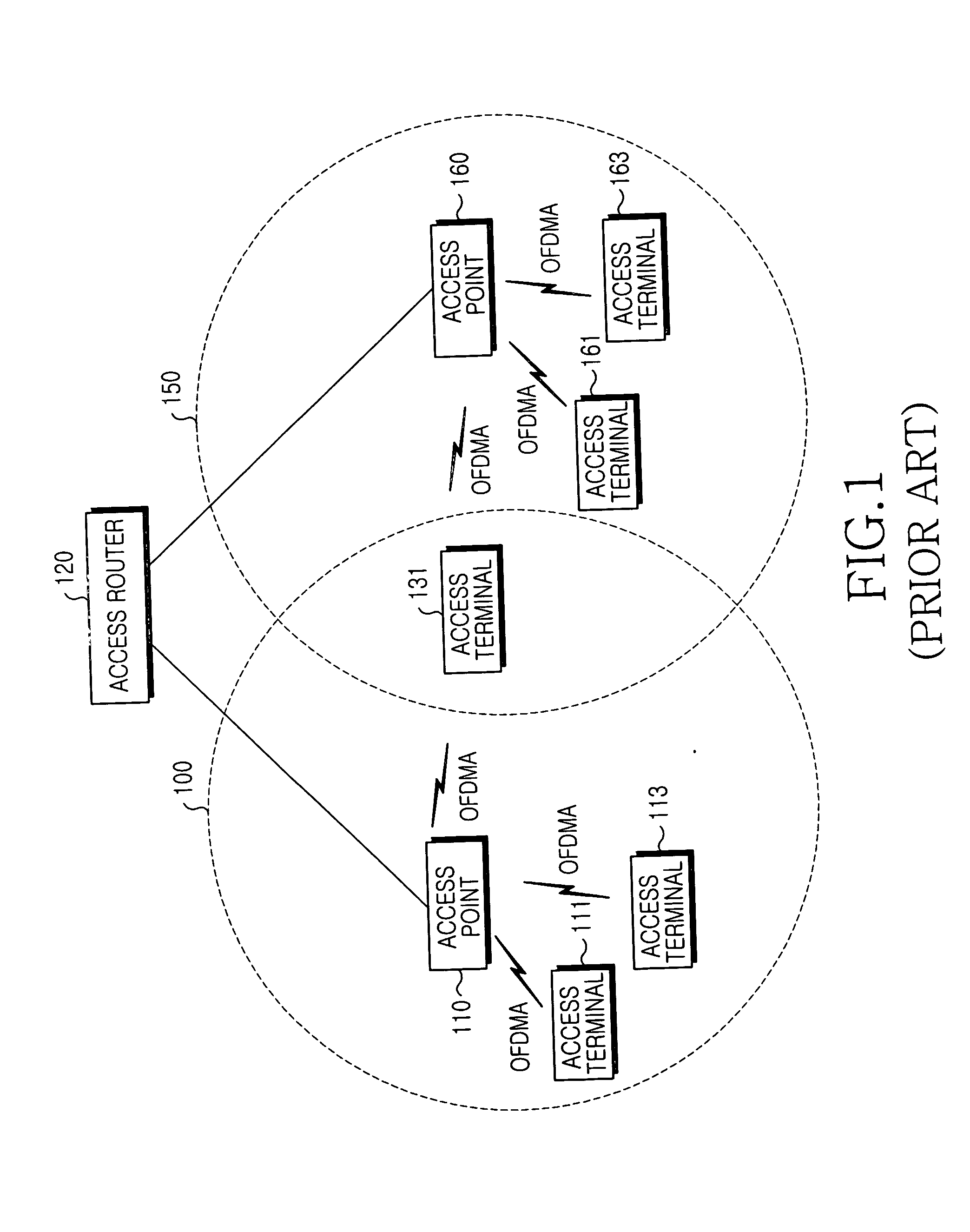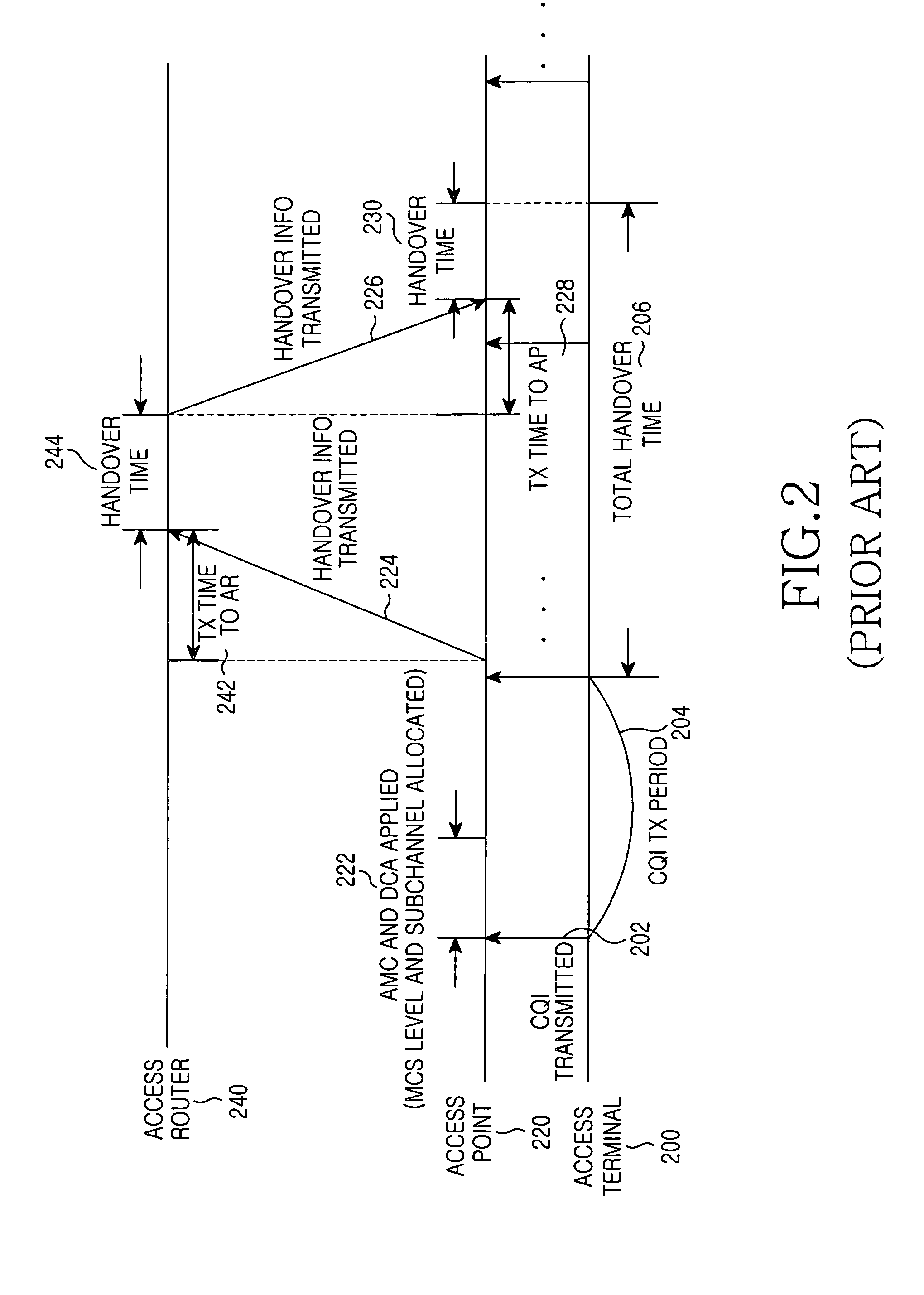System and method for dynamically allocating resources in a mobile communication system employing orthogonal frequency division multiple access
a mobile communication system and dynamic allocation technology, applied in orthogonal multiplex, multiplex communication, data switching networks, etc., can solve problems such as the reduction of the entire transmission efficiency of the system, the limitations of the actual implementation of the ofdm scheme, and the inability to guarantee the channel quality of subcarriers allocated to access terminals
- Summary
- Abstract
- Description
- Claims
- Application Information
AI Technical Summary
Benefits of technology
Problems solved by technology
Method used
Image
Examples
Embodiment Construction
[0056] A preferred embodiment of the present invention will now be described in detail with reference to the annexed drawings. In the following description, a detailed description of known functions and configurations incorporated herein has been omitted for conciseness.
[0057]FIG. 4 is a chart which illustrates a method for allocating time-frequency resources in a communication system employing Frequency Hopping-Orthogonal Frequency Code Division Multiple Access (FH-OFCDMA). It should be noted that Orthogonal Frequency Division Multiplexing (OFDM) has a high spectrum efficiency because spectrums between subcarriers overlap each other while maintaining mutual orthogonality. OFDM uses an Inverse Fast Fourier Transform (IFFT) for modulation and a Fast Fourier Transform (FFT) for demodulation. As implementation of OFDM-based Multiple Access, there is Orthogonal Frequency Division Multiple Access (OFDMA) in which some of the subcarriers from among all of the subcarriers are allocated to...
PUM
 Login to View More
Login to View More Abstract
Description
Claims
Application Information
 Login to View More
Login to View More - R&D
- Intellectual Property
- Life Sciences
- Materials
- Tech Scout
- Unparalleled Data Quality
- Higher Quality Content
- 60% Fewer Hallucinations
Browse by: Latest US Patents, China's latest patents, Technical Efficacy Thesaurus, Application Domain, Technology Topic, Popular Technical Reports.
© 2025 PatSnap. All rights reserved.Legal|Privacy policy|Modern Slavery Act Transparency Statement|Sitemap|About US| Contact US: help@patsnap.com



